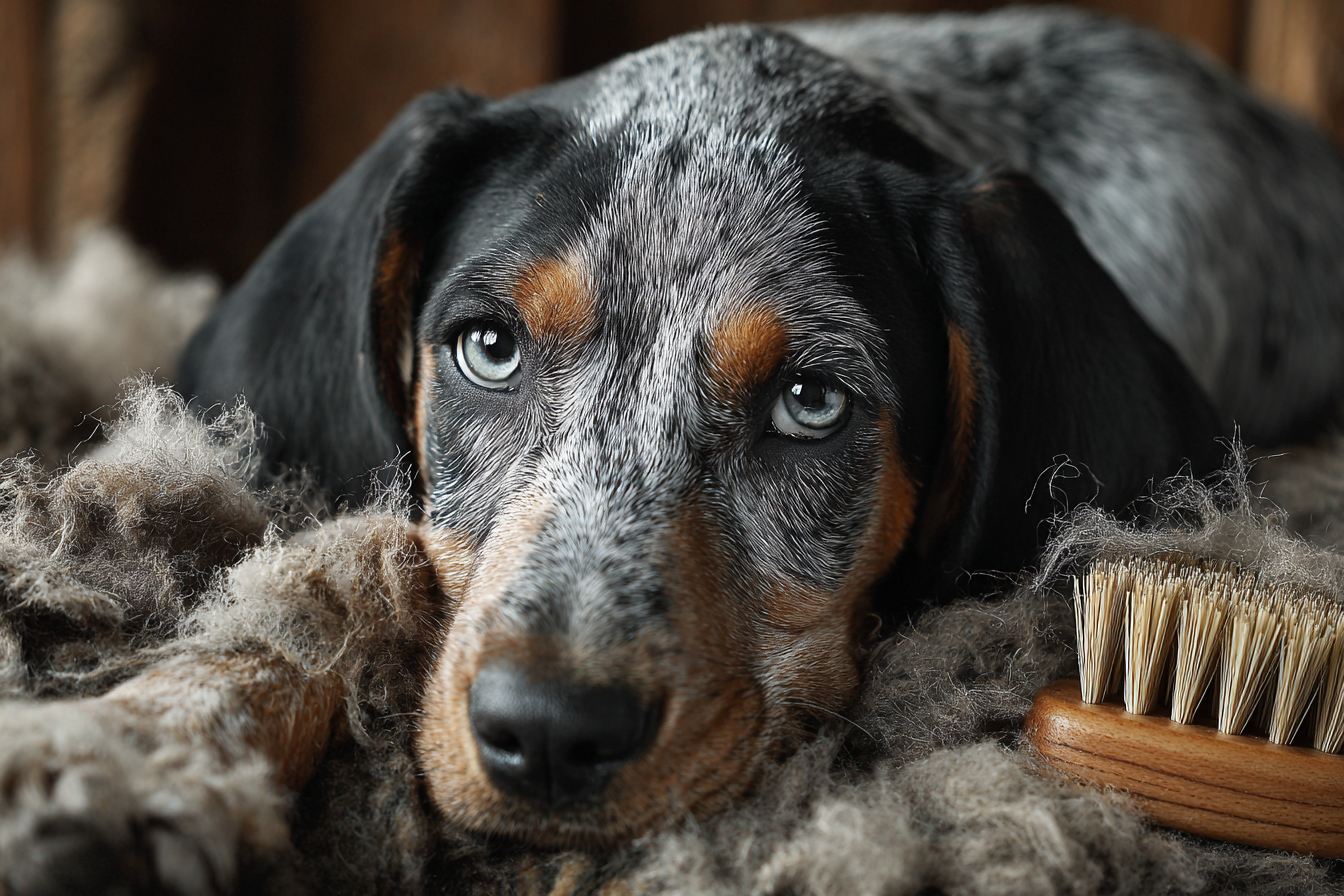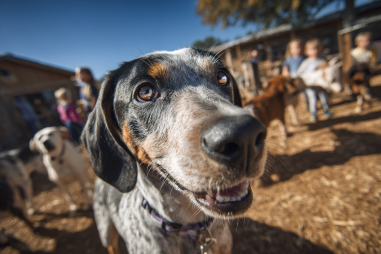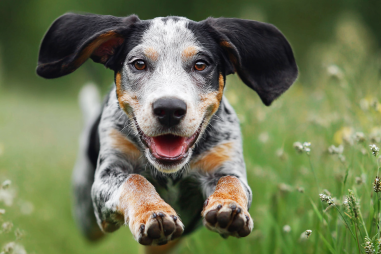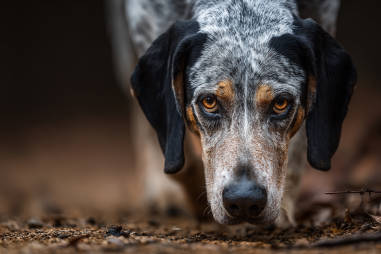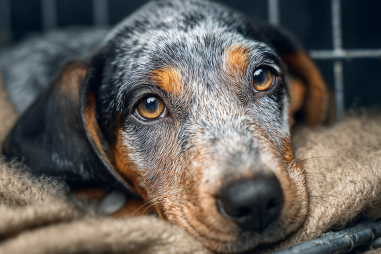The Bluetick Coonhound is a striking breed known for its distinctive mottled coat and keen hunting abilities. Despite having short hair, Bluetick Coonhounds do experience seasonal shedding, which can sometimes surprise new owners. Proper shedding management and attentive coat care are essential to keep your dog looking its best and feeling comfortable year-round. In this article, we’ll explore everything you need to know about Bluetick Coonhound shedding patterns, effective grooming tools, bathing routines, the impact of nutrition, advice for allergy sufferers, and seasonal care tips to maintain a healthy, glossy coat.
Shedding Patterns in Bluetick Coonhounds
Bluetick Coonhounds have short, dense coats that are relatively low-maintenance compared to long-haired breeds. However, they are not completely free from shedding. These dogs tend to shed more heavily during seasonal changes, specifically in the spring and fall. This shedding is part of their natural cycle to adapt their coat thickness for different temperatures.
In spring, your Bluetick Coonhound will shed its thicker winter undercoat to prepare for warmer weather. Conversely, in the fall, they shed the lighter summer hair to make room for the denser undercoat that provides insulation against cold weather. Outside of these periods, their shedding is quite minimal but still occurs consistently at a low level.
Understanding these patterns helps owners prepare for the extra grooming needs during heavy shedding seasons to ensure loose hair doesn’t accumulate around the house or on your furniture.
Grooming Tools for Shedding Control
To manage Bluetick Coonhound shedding effectively, using the right grooming tools makes all the difference. Because their coat is short but dense, it’s important to use tools that can reach the undercoat and remove loose hair efficiently without harming the skin.
- Bristle Brush: A soft to medium bristle brush is great for regular grooming sessions. It helps distribute natural oils throughout the coat, which promotes shine and healthy skin while managing loose fur.
- Rubber Curry Brush: This tool works well at removing loose hairs and dirt from the coat, especially during shedding seasons. Its massaging effect also stimulates the skin and improves circulation.
- Deshedding Tool: A specialized deshedding tool, like the Furminator, can be extremely effective in reaching deep under the top coat to pull out loose fur, reducing shedding significantly when used a couple of times a week.
- Shedding Blade: A traditional shedding blade is useful for medium to short-haired dogs. It helps comb out dead hair and can be especially handy around the neck, chest, and back—the areas where Blueticks tend to shed most.
Consistency is key. Regular brushing, at least 2-3 times weekly and more during shedding seasons, will keep shedding in check and your dog’s coat looking sleek.
Bathing Frequency and Products
Bluetick Coonhounds don’t require frequent baths unless they get particularly dirty from outdoor activities. Bathing a dog too often can strip natural oils from their coat, leading to dryness and irritation, which may worsen shedding.
Most owners find that bathing every 6 to 8 weeks is sufficient for maintaining cleanliness and skin health. During heavy shedding times, a bath can help loosen dead hair, making brushing more effective.
When choosing shampoos, opt for products formulated for dogs with sensitive skin or those designed to enhance coat health. Look for ingredients like oatmeal, aloe vera, and vitamin E to soothe and moisturize the skin. Avoid harsh detergents or human shampoos, as these can upset the natural pH balance of your Bluetick’s skin.
After bathing, use a conditioner or a coat booster spray for additional hydration and smoothness. Dry your dog thoroughly with a towel and, if tolerated, a low-heat blow dryer to prevent moisture-related skin issues.
Nutrition’s Role in Coat Health
Never underestimate the power of nutrition in maintaining a healthy coat and controlling shedding. A balanced diet that meets all of your Bluetick Coonhound’s nutritional needs supports skin integrity, fur growth, and overall vitality.
Essential fatty acids, particularly omega-3 and omega-6, play a vital role in reducing shedding and improving coat shine. These can be found in high-quality commercial dog foods or supplemented through fish oils, flaxseed, and other sources, with your veterinarian’s guidance.
Protein quality is also a key factor since the coat is primarily made of keratin, a protein. Feeding your dog a diet with sufficient high-quality animal proteins contributes to healthy fur production.
Additionally, vitamins like zinc, vitamin E, and biotin are crucial for skin repair and hair follicle function. If you notice excessive shedding or dullness in your Bluetick’s coat, discuss with your vet about possible dietary improvements or supplements.
Tips for Allergy Sufferers
Shedding dogs can trigger allergies for some family members, but Bluetick Coonhounds have manageable shedding that, with good care, should minimize allergen spread.
- Keep your dog’s coat well-groomed. Regular brushing reduces loose fur and dander, which are common allergy triggers.
- Use a vacuum cleaner with a HEPA filter to frequently clean floors, furniture, and pet bedding.
- Consider creating dog-free zones in the house, especially in bedrooms, to reduce allergen load.
- Wipe down your dog’s coat with pet-safe wipes or a damp cloth between baths to remove loose hair and dander.
- Consult an allergist for appropriate treatments if symptoms are persistent or severe.
Seasonal Care Advice
Proactively adjusting your grooming routine and care techniques based on the season can greatly benefit your Bluetick Coonhound.
- Spring: During spring shedding, increase brushing frequency to daily if possible and use a deshedding tool to combat the heavy release of undercoat. Bathe your dog at the start and middle of the season to help remove loose hair and refresh the skin.
- Summer: Maintain weekly brushing to keep the short coat clean and free of tangles or mats. Watch for signs of overheating or sunburn, especially if your Bluetick spends extended time outdoors.
- Fall: Like spring, fall requires more frequent grooming as your dog transitions to a thicker winter coat. Bathing can help loosen old hair, and supplements for coat health can prepare your dog’s skin for colder weather.
- Winter: Coat care focuses on moisturizing to prevent dryness and cracking. Brushing a few times a week is enough, and limit baths to avoid drying the skin out.
Adjust your home environment by using humidifiers in winter and providing adequate shelter outdoors to protect against harsh elements.
Keeping Your Bluetick Coonhound’s Coat Healthy and Shedding Managed
Though Bluetick Coonhounds have relatively low-maintenance coats, they do shed seasonally and benefit greatly from consistent care. Understanding their natural shedding rhythms and employing the right grooming tools helps keep shedding under control. Coupled with appropriate bathing schedules, a balanced nutritional plan, and extra care during seasonal transitions, your Bluetick will not only look great but feel comfortable and healthy.
For allergy sufferers, maintaining cleanliness and grooming go hand-in-hand to minimize triggers. By investing time in these simple yet effective coat care practices, you ensure your Bluetick Coonhound remains a beautiful, happy companion throughout the year.

